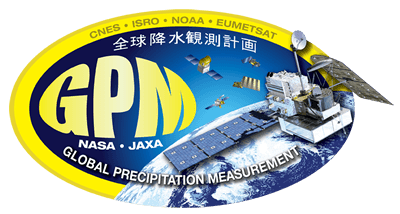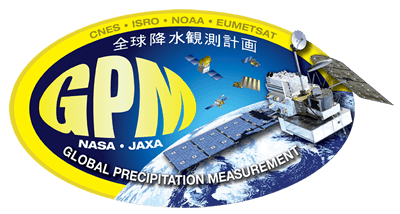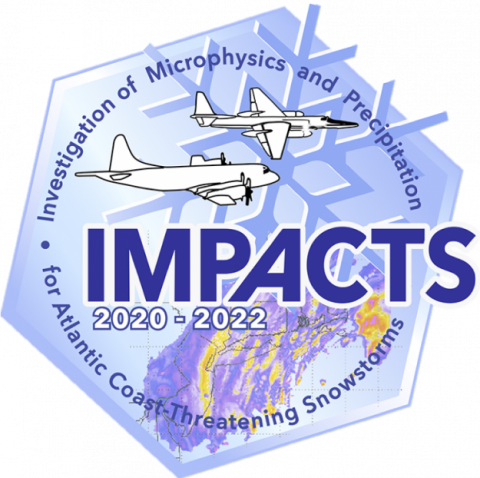 The NASA Global Hydrology Resource Center (GHRC) DAAC published the ER-2 X-band Radar (EXRAD) IMPACTS dataset. This dataset consists of radar reflectivity and Doppler velocity estimates collected by the EXRAD onboard the NASA ER-2 high-altitude research aircraft. These data were gathered during the Investigation of Microphysics and Precipitation for Atlantic Coast-Threatening Snowstorms (IMPACTS) field campaign. IMPACTS was a three-year sequence of winter season deployments conducted to study snowstorms over the U.S Atlantic Coast (2020-2022). The campaign aimed to (1) Provide observations critical to understanding the mechanisms of snowband formation, organization, and evolution; (2) Examine how the microphysical characteristics and likely growth mechanisms of snow particles vary across snowbands; and (3) Improve snowfall remote sensing interpretation and modeling to significantly advance prediction capabilities. The EXRAD IMPACTS dataset files are available from January 25 through February 27, 2020 in HDF-5 format. It should be noted that the ER-2 aircraft did not operate each day of the campaign, therefore EXRAD data are only available for aircraft flight days.
The NASA Global Hydrology Resource Center (GHRC) DAAC published the ER-2 X-band Radar (EXRAD) IMPACTS dataset. This dataset consists of radar reflectivity and Doppler velocity estimates collected by the EXRAD onboard the NASA ER-2 high-altitude research aircraft. These data were gathered during the Investigation of Microphysics and Precipitation for Atlantic Coast-Threatening Snowstorms (IMPACTS) field campaign. IMPACTS was a three-year sequence of winter season deployments conducted to study snowstorms over the U.S Atlantic Coast (2020-2022). The campaign aimed to (1) Provide observations critical to understanding the mechanisms of snowband formation, organization, and evolution; (2) Examine how the microphysical characteristics and likely growth mechanisms of snow particles vary across snowbands; and (3) Improve snowfall remote sensing interpretation and modeling to significantly advance prediction capabilities. The EXRAD IMPACTS dataset files are available from January 25 through February 27, 2020 in HDF-5 format. It should be noted that the ER-2 aircraft did not operate each day of the campaign, therefore EXRAD data are only available for aircraft flight days. GHRC News
 The NASA Global Hydrology Resource Center (GHRC) DAAC published the ER-2 X-band Radar (EXRAD) IMPACTS dataset. This dataset consists of radar reflectivity and Doppler velocity estimates collected by the EXRAD onboard the NASA ER-2 high-altitude research aircraft. These data were gathered during the Investigation of Microphysics and Precipitation for Atlantic Coast-Threatening Snowstorms (IMPACTS) field campaign. IMPACTS was a three-year sequence of winter season deployments conducted to study snowstorms over the U.S Atlantic Coast (2020-2022). The campaign aimed to (1) Provide observations critical to understanding the mechanisms of snowband formation, organization, and evolution; (2) Examine how the microphysical characteristics and likely growth mechanisms of snow particles vary across snowbands; and (3) Improve snowfall remote sensing interpretation and modeling to significantly advance prediction capabilities. The EXRAD IMPACTS dataset files are available from January 25 through February 27, 2020 in HDF-5 format. It should be noted that the ER-2 aircraft did not operate each day of the campaign, therefore EXRAD data are only available for aircraft flight days.
The NASA Global Hydrology Resource Center (GHRC) DAAC published the ER-2 X-band Radar (EXRAD) IMPACTS dataset. This dataset consists of radar reflectivity and Doppler velocity estimates collected by the EXRAD onboard the NASA ER-2 high-altitude research aircraft. These data were gathered during the Investigation of Microphysics and Precipitation for Atlantic Coast-Threatening Snowstorms (IMPACTS) field campaign. IMPACTS was a three-year sequence of winter season deployments conducted to study snowstorms over the U.S Atlantic Coast (2020-2022). The campaign aimed to (1) Provide observations critical to understanding the mechanisms of snowband formation, organization, and evolution; (2) Examine how the microphysical characteristics and likely growth mechanisms of snow particles vary across snowbands; and (3) Improve snowfall remote sensing interpretation and modeling to significantly advance prediction capabilities. The EXRAD IMPACTS dataset files are available from January 25 through February 27, 2020 in HDF-5 format. It should be noted that the ER-2 aircraft did not operate each day of the campaign, therefore EXRAD data are only available for aircraft flight days.  The NASA Global Hydrology Resource Center (GHRC) DAAC published the GPM Ground Validation Environment Canada (EC) Weather Station XET C3VP dataset. This dataset consists of surface meteorological data collected at the Environment Canada (EC) XET station at the Centre for Atmospheric Research Experiments (CARE) during the Canadian CloudSat/CALIPSO Validation Project (C3VP) field campaign. The campaign took place in southern Canada in support of multiple science missions, including the NASA GPM mission, in order to improve the modeling and remote sensing of winter precipitation. The XET C3VP dataset file includes temperature, pressure, wind speed and direction, relative humidity, solar radiation, grass temperature, soil temperature, snow depth, sunshine, and precipitation measurements from October 4, 2006 through March 31, 2007 in ASCII-csv format.
The NASA Global Hydrology Resource Center (GHRC) DAAC published the GPM Ground Validation Environment Canada (EC) Weather Station XET C3VP dataset. This dataset consists of surface meteorological data collected at the Environment Canada (EC) XET station at the Centre for Atmospheric Research Experiments (CARE) during the Canadian CloudSat/CALIPSO Validation Project (C3VP) field campaign. The campaign took place in southern Canada in support of multiple science missions, including the NASA GPM mission, in order to improve the modeling and remote sensing of winter precipitation. The XET C3VP dataset file includes temperature, pressure, wind speed and direction, relative humidity, solar radiation, grass temperature, soil temperature, snow depth, sunshine, and precipitation measurements from October 4, 2006 through March 31, 2007 in ASCII-csv format.
DOI: http://dx.doi.org/10.5067/GPMGV/C3VP/METSTATION/DATA201
 The NASA Global Hydrology Resource Center (GHRC) DAAC published the GPM Ground Validation Environment Canada (EC) Surface Meteorological Station C3VP dataset. This dataset consists of meteorological data collected at the Environment Canada (EC) climate station at the Centre for Atmospheric Research Experiments (CARE) during the Canadian CloudSat/CALIPSO Validation Project (C3VP) field campaign. The campaign took place in southern Canada in support of multiple science missions, including the NASA GPM mission, in order to improve the modeling and remote sensing of winter precipitation. The GPM GV EC Surface Meteorological Station C3VP data include surface temperature and precipitation data available from November 1, 2005 through March 31, 2007 in Microsoft Excel format.
The NASA Global Hydrology Resource Center (GHRC) DAAC published the GPM Ground Validation Environment Canada (EC) Surface Meteorological Station C3VP dataset. This dataset consists of meteorological data collected at the Environment Canada (EC) climate station at the Centre for Atmospheric Research Experiments (CARE) during the Canadian CloudSat/CALIPSO Validation Project (C3VP) field campaign. The campaign took place in southern Canada in support of multiple science missions, including the NASA GPM mission, in order to improve the modeling and remote sensing of winter precipitation. The GPM GV EC Surface Meteorological Station C3VP data include surface temperature and precipitation data available from November 1, 2005 through March 31, 2007 in Microsoft Excel format. The NASA Global Hydrology Resource Center (GHRC) DAAC published the GPM Ground Validation (GV) Environment Canada (EC) Visibility Sensor FD12P C3VP dataset. This dataset consists of visibility and precipitation data collected at the Environment Canada Canadian Climate station at the Centre for Atmospheric Research Experiments (CARE) site during the Canadian CloudSat/CALIPSO Validation Project (C3VP) field campaign. The campaign took place in southern Canada in support of multiple science missions, including the NASA GPM mission, in order to improve the modeling and remote sensing of winter precipitation. The GPM GV Visibility Sensor FD12P C3VP data are available from October 4, 2006 through March 31, 2007 in a Microsoft Excel comma-separated variable spreadsheet.
The NASA Global Hydrology Resource Center (GHRC) DAAC published the GPM Ground Validation (GV) Environment Canada (EC) Visibility Sensor FD12P C3VP dataset. This dataset consists of visibility and precipitation data collected at the Environment Canada Canadian Climate station at the Centre for Atmospheric Research Experiments (CARE) site during the Canadian CloudSat/CALIPSO Validation Project (C3VP) field campaign. The campaign took place in southern Canada in support of multiple science missions, including the NASA GPM mission, in order to improve the modeling and remote sensing of winter precipitation. The GPM GV Visibility Sensor FD12P C3VP data are available from October 4, 2006 through March 31, 2007 in a Microsoft Excel comma-separated variable spreadsheet.
 The NASA Global Hydrology Resource Center (GHRC) DAAC published the UND Cloud Microphysics IMPACTS dataset. This dataset consists of cloud particle measurements collected during the Investigation of Microphysics and Precipitation for Atlantic Coast-Threatening Snowstorms (IMPACTS) field campaign. IMPACTS was a three-year sequence of winter season deployments conducted to study snowstorms over the U.S Atlantic Coast (2020-2022). The campaign aimed to (1) Provide observations critical to understanding the mechanisms of snowband formation, organization, and evolution; (2) Examine how the microphysical characteristics and likely growth mechanisms of snow particles vary across snowbands; and (3) Improve snowfall remote sensing interpretation and modeling to significantly advance prediction capabilities. The UND Cloud Microphysics IMPACTS dataset files are stored in ASCII format from January 25 through February 26, 2020. It should be noted that NASA P-3 flights did not occur each day during the field campaign, therefore there are missing days between January 25, 2020 and February 26, 2020.
The NASA Global Hydrology Resource Center (GHRC) DAAC published the UND Cloud Microphysics IMPACTS dataset. This dataset consists of cloud particle measurements collected during the Investigation of Microphysics and Precipitation for Atlantic Coast-Threatening Snowstorms (IMPACTS) field campaign. IMPACTS was a three-year sequence of winter season deployments conducted to study snowstorms over the U.S Atlantic Coast (2020-2022). The campaign aimed to (1) Provide observations critical to understanding the mechanisms of snowband formation, organization, and evolution; (2) Examine how the microphysical characteristics and likely growth mechanisms of snow particles vary across snowbands; and (3) Improve snowfall remote sensing interpretation and modeling to significantly advance prediction capabilities. The UND Cloud Microphysics IMPACTS dataset files are stored in ASCII format from January 25 through February 26, 2020. It should be noted that NASA P-3 flights did not occur each day during the field campaign, therefore there are missing days between January 25, 2020 and February 26, 2020.






